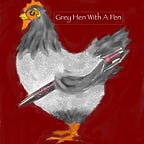Poetry/Wildflowers
Wood Anemone
A poem with analysis
One of my favourite flowers the wood anemone is named after the Wind Gods the Anemoi, the four sons of Eos, the Goddess of Dawn and Astraeus, the God of Dusk. A member of the buttercup family. It is a low-growing plant with cupped heads of white which may be purple streaked. It has a thin red stem, and almost palmate leaves. The anemone can be found in shaded woodland areas. It always faces away from the wind, and the cupped heads only fully open in full sunlight. Because their flowering season is very short, the wood anemone is a symbol of premature death.
The Wood Anemone
A spring delight, sleepy in dappled shade,
nodding cupped heads amongst the silent ghosts
who haunt the ancient woodlands.
White windflowers, flecked by lemon light,
herald Zephyrus to buffet your patch of sacred
quietness. Whisper your secrets to the Gods.
Sweet thimbleweed, blooming a galaxy of stars
from Yorkshire’s Dales to Kennall’s Vale.
Frail cups in hedges, on shaded banks,
the dusky spectre of premature death,
sprung from Aphrodite’s bitter tears,
grieving her lost love across the years.
Analysis
‘The Wood Anemone’ is a poem that captures the essence of springtime, the beauty of nature, and the ephemeral nature of life. The poet uses vivid imagery and mythical references to convey the delicate and fleeting nature of the wood anemone flowers.
1. Theme: The main themes of the poem are spring, beauty, nature’s cycle, and the passing of time. The wood anemone is used as a symbol of the transient beauty and fragility of life.
2. Imagery: The poet skillfully employs imagery to paint a picture of the wood anemone and its surroundings. Words like “sleepy,” “dappled shade,” “nodding cupped heads,” “lemon light,” and “galaxy of stars” create a visual and sensory experience for the reader.
3. Mythical references: The mention of “Zephyrus,” the Greek god of the west wind, adds a mythical and enchanting dimension to the poem. It enhances the sense of nature’s power and brings the reader into the realm of ancient myths.
4. Contrast: The poem contrasts the fragile beauty of the wood anemone with the ghosts and ancient woodlands, as well as the spectre of death. This contrast highlights the fleeting nature of life and the interconnectedness of beauty and mortality.
5. Emotion: The poem evokes a sense of tenderness, reverence, and melancholy. The mention of “Whisper your secrets to the Gods” and “grieving her lost love across the years” conveys a sense of longing and sorrow.
6. Alliteration and assonance: The poem employs alliteration (repetition of initial consonant sounds) and assonance (repetition of vowel sounds) to create a musical quality. For example, “nodding cupped heads,” “White windflowers, flecked by lemon light,” and “Sweet thimbleweed, blooming a galaxy of stars” contribute to the poetic flow.
7. Punctuation and structure: The use of enjambment (continuation of a sentence beyond a line) enhances the fluidity of the poem, allowing ideas to flow seamlessly from one line to another. The lack of punctuation at the end of some lines also contributes to the sense of continuity.
In conclusion, “The Wood Anemone” explores the themes of spring, beauty, and mortality through the imagery of wood anemone flowers. The poet’s use of language and mythical references adds depth and emotion to the poem, making it a poignant reflection on the transient nature of life and the enduring beauty of nature.
